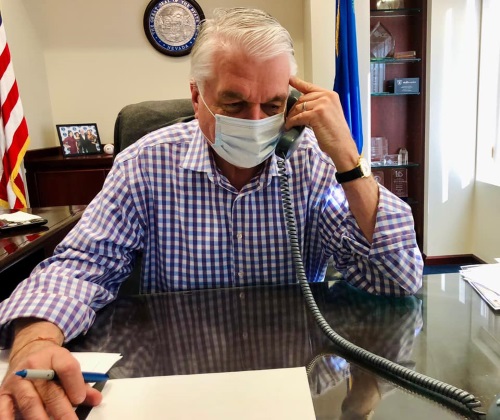A roundup of headlines curated for state transportation environmental professionals
FEDERAL ACTION
Biden shortlist for White House key environmental post shows focus on environmental justice – Reuters
Biden Administration has many hurdles to leap in addressing surface transportation infrastructure – Logistics Management
Lawmakers request new GAO studies on pandemic’s effect on the aviation industry – Washington Post
Lawmakers Want Data to Decide the Future of America’s Electric Vehicle Charging Infrastructure – Nextgov
Former DOT chief to potential Biden picks: Beware of agency turf wars – FreightWaves
COVID-19
VTrans’ $600,000 Covid sign blitz targets travel to and from state – VTDigger
WYDOT praises federal emergency declaration extension as COVID pandemic persists – Oil City News
Austin’s mobility challenges analyzed during and after Covid-19 – Austin Business Journal
The Pandemic Took $750 Million From VA’s Transportation Budget. Here’s What Happens Now. – Dogwood
COVID May Impact NH’s Ability to Plow Roads, Official Says – NECN
INFRASTRUCTURE RESILIENCE AND SUSTAINABILITY
FHWA reveals updated Jason’s Law truck parking survey – Land Line
First U.S. Offshore Wind Tower Factory Proposed For Port Of Albany – WAMC Radio
Electric Cargo Bikes Are Debuting in City Fleets – Route Fifty
Sound Transit light rail trains are now running on clean energy – Sound Transit (Press release)
Congress should prioritize infrastructure investment – Crain’s Chicago Business (Op-ed)
AIR QUALITY
Oil Refineries See Profit in Turning Kitchen Grease Into Diesel – New York Times
Transit Expert Calls The MBTA’s $89M Plan For New Silver Line Buses ‘Greenwashing’ – WBUR Radio
ENVIRONMENTAL JUSTICE
Environmental Justice Crusader Eyed for White House Council – The Quint
Virginia to hire its first environmental justice director – Bay Journal News Service
Facing a funding crisis, Caltrain doubled down on racial and social equity, and it worked -Architect’s Newspaper (Op-ed)
Leaving a social legacy from infrastructure – Infrastructure Intelligence (Commentary)
NATURAL RESOURCES
TRPA starts work to remove invasive plants in Taylor, Tallac creeks – Tahoe Daily Tribune
Mitigation “bank” near Greeley will offset wetland damage, meet Clean Water Act rules – Colorado Sun
EPA awards $187,000 to Pennsylvania to support wetlands restoration – Daily American
Clean water projects highlighted in national ‘green infrastructure’ report – VTDigger
HEALTH AND HUMAN ENVIRONMENT/ACTIVE TRANSPORTATION
43rd Street Pedestrian Bridge Over Lake Shore Drive To Be Replaced With Accessible Overpass – Block Club Chicago
RTD partners with Lyft in mobile ticketing app – Denver Post
Honolulu bikeshare program lost city about $460K in 2019 – AP
Implementation requires money where our mouth is – Bozeman Daily Chronicle (Opinion)
TRB RESOURCES/ANNOUNCEMENTS
Updated Survey of Laws and Regulations Applicable to Airport Commercial Ground Transportation – ACRP
Improving Health Care through Transportation – TCRP
Measuring and Managing Freight System Resilience Workshop – TRB/FHWA
FEDERAL REGISTER NOTICES
Expansion and Extension of the Modified Emergency Declaration No. 2020-002 Under 49 CFR § 390.25 – Federal Motor Carrier Safety Administration (Announcement)
Proposed Consent Decree, Clean Air Act Citizen Suit – EPA (Notice of proposed consent decree; request for public comment)
Notice of Final Adoption of and Effective Date; Federal Environment Element, Section G of the Comprehensive Plan for the National Capital – National Capital Planning Commission (Notice of final adoption of and effective date)
Canadian Pacific Railway Company – Control Exemption – Detroit River Tunnel Company – Surface Transportation Board (Notice)
Surface Transportation Project Delivery Program; Alaska Department of Transportation Third Audit Report – FHWA (Notice; Request for comment)



